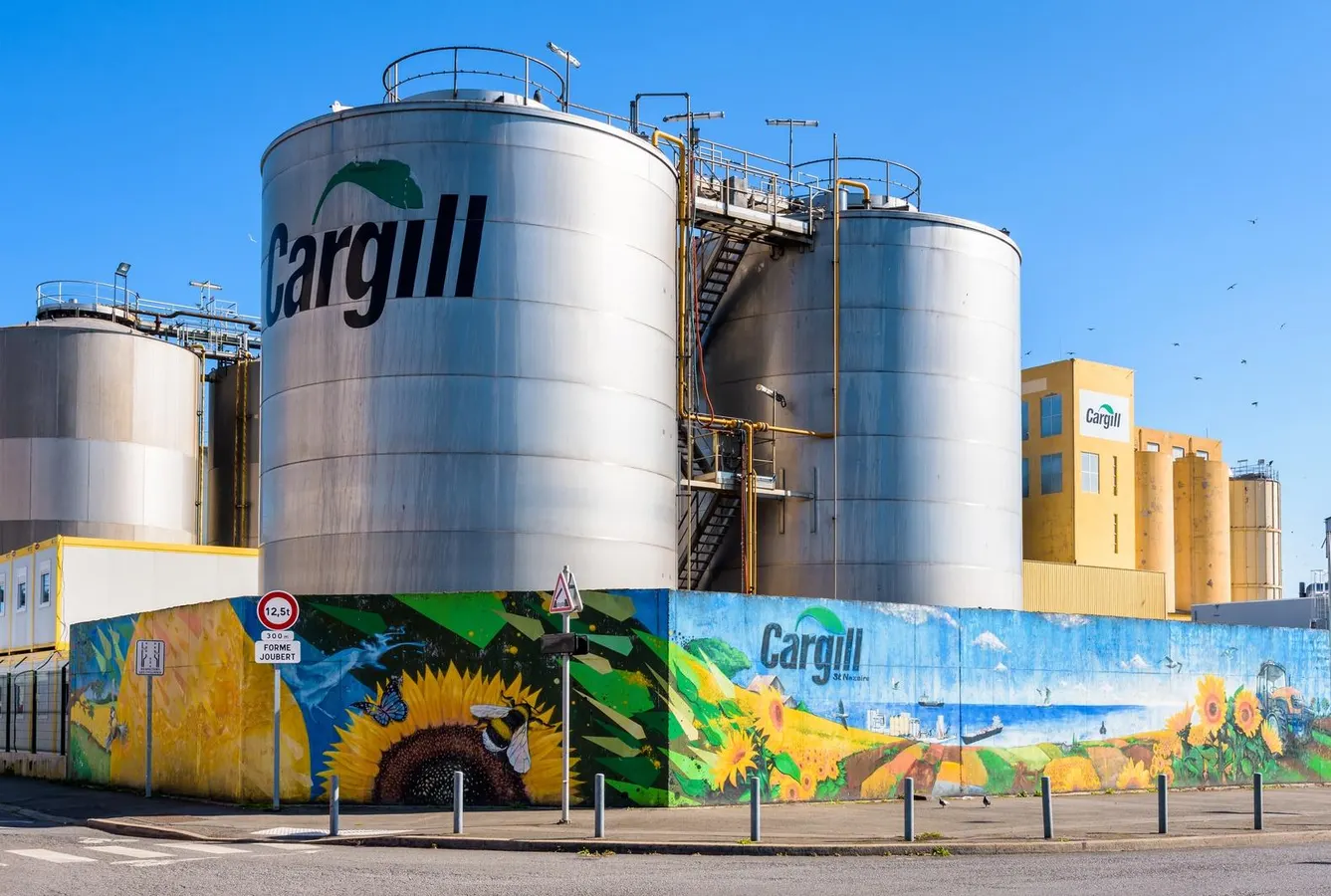By Contributor Peter High
Oil tanks of the sunflower processing plant of Cargill in the port of Saint-Nazaire, France
Jennifer Hartsock, Chief Information and Digital Officer of Cargill, leads technology at a company that operates on a massive global scale with more than 150,000 employees across 70 countries and commercial activity in over 100. In 2024, Cargill earned an estimated $160 billion in revenue. “We feed the equivalent of about 500 million people full calories for an entire year,” Hartsock explained with pride. “We are all over the place in the food and agriculture supply chain.”
Since joining Cargill over three years ago, Hartsock has helped lead a sweeping digital transformation and organizational restructuring that aligns technology operations more closely with the complexity and mission of the business. One of her most significant contributions has been reorganizing the technology team to move away from an efficiency-centric outsourcing model toward a product-focused and proximity-driven structure.
Transforming IT to Accelerate Outcomes
Cargill’s previous IT operating model was a vestige of a time when the company operated like a holding company with over 100 independent business units. The shift to a centralized operating model brought efficiency but often sacrificed speed and clarity. “We were structured for efficiency of spend more than proximity to who we serve,” Hartsock noted.
The new model groups technology teams into four major categories:
Core services such as infrastructure and cybersecurity
Differentiated solutions that serve individual business units (referred to as enterprises at Cargill)
Shared multi-stakeholder solutions known as hubs and a strategy
Governance team that ensures alignment and coordination.
“We found that we were not only more effective but also more efficient,” she said of the transformation. “My colleagues have noticed how we show up differently.”
Creating Ownership and Accountability in a Product Model
Although the enterprise-level technology leaders don’t carry the title of CIO, Hartsock’s direct reports operate as such in practice. “They are the owners of their engineering talent and data teams,” she said. “They get to make decisions in partnership with our colleagues in those business units or functions.”
MORE FOR YOU
Proximity to business outcomes is a defining feature of the new structure. Decision-making authority around talent and capital allocation resides with those closest to the outcomes. “We want to put the decision as close to those who have to live with the consequences as possible,” Hartsock explained. This has enabled faster iteration, clearer accountability and improved business alignment.
Data Governance With Purpose and Precision
Cargill has taken a pragmatic and evolving approach to managing data across its varied businesses. “We spent a lot of time thinking about those data domains and where we need to drive for commonality,” Hartsock said. In some cases such as customer data, over-centralization proved counterproductive due to the distinct ways each business unit defines and interacts with its customers.
Jennifer Hartsock, Chief Information & Digital Officer of Cargill
thomas strand
By segmenting where data should be centralized, shared across business units or governed at the regional level, Hartsock and her team have built flexibility into the company’s data strategy. “We believe in having good data platforms that help inform insights and decision-making,” she said. “We’re in the business of trying to figure out both all the time.”
Insourcing Talent to Deepen Capability and Commitment
When Hartsock joined Cargill in February of 2022, 80% of Cargill’s digital and IT talent was outsourced. Her strategy targets a reversal of that ratio to 60% insourced. “Even when done perfectly [outsourcing] is still a bifurcation of focus,” she underscored. “We will be able to do more, we will be able to do it better, we will be able to do it faster and we will do it as a consequence less expensively.”
Cargill has launched a global hiring effort focused on engineers, cybersecurity experts, data scientists and application specialists. The company opened a tech hub in Atlanta and is expanding in Bangalore. “We exceeded our hiring target of 300 last fiscal year and will hire over 500 this year,” Hartsock said. Once the transition is complete, the team will consist of 5,000 to 6,000 people with more than 60% directly employed by Cargill.
Accelerating AI With Practical Application
Cargill’s AI strategy focuses on four categories:
R&D innovation
Customer experience enhancement
Productivity improvements
Decision support.
“We consider ourselves a mainstream adopter, but from my informal market research, Cargill is on the leading edge of mainstream,” Hartsock observed.
From using AI to support ERP modernization to generating insights that improve food shelf life, adoption is moving beyond pilot projects. “They are in production,” Hartsock emphasized. “They are running. They are absolutely generating positive outcomes.” A generative AI tool is already helping sales teams recommend food ingredients to bakery clients based on detailed specifications.
To ensure value realization, her team rigorously monitors usage and business impact. “If we’re not seeing what we expect, we’ve got two choices: figure out what’s broken or shut it down,” she explained. AI adoption is tied tightly to measurable business outcomes.
Ethical Innovation With an Eye Toward the Future
In line with Cargill’s purpose of nourishing the world safely, responsibly and sustainably, Hartsock emphasizes responsible technology use. “If we can’t do it safe and responsible and sustainable, we don’t want to do it,” she said. The company has chosen to keep a human in the loop for all generative AI use cases for now though it is exploring the potential of autonomous agents.
Through intentional leadership, structural transformation and pragmatic innovation, Hartsock is helping Cargill do just that at massive scale and with purpose at the center.
Peter High is President of Metis Strategy, a business and IT advisory firm. He has written three bestselling books, including his latest Getting to Nimble. He also moderates the Technovation podcast series and speaks at conferences around the world. Follow him on Twitter @PeterAHigh.
Editorial StandardsReprints & Permissions
